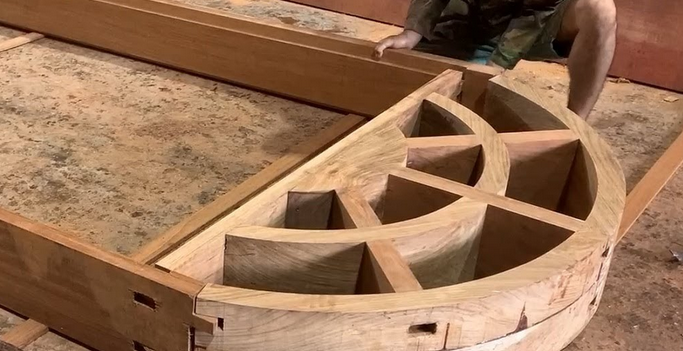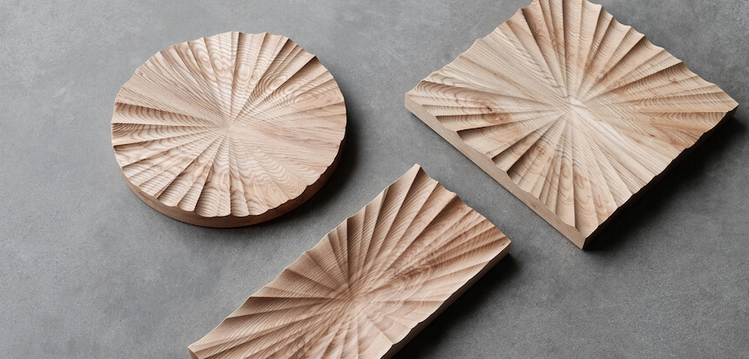Woodworking is a timeless craft that allows artisans to transform raw timber into intricate works of art. As skills progress, the desire to take on more complex projects often emerges. This comprehensive guide delves into the world of advanced woodworking, focusing on crafting complex geometric and curved designs that push the boundaries of creativity and technical expertise.

Understanding Advanced Woodworking
Advanced woodworking goes beyond basic techniques and projects, requiring a deep understanding of woodworking principles, tools, and materials. Craftsmen who embark on advanced projects seek to challenge themselves and create pieces that are not only functional but also visually captivating.
Mastering Geometric Designs
Precision and Planning
Crafting complex geometric designs demands meticulous planning and precision. From measuring angles and dimensions to selecting suitable wood species, each step is essential to achieving a flawless result.
Inlays and Marquetry
Inlays and marquetry involve intricately cutting and fitting pieces of wood, often with contrasting colors, to create stunning patterns and images. This technique adds an artistic touch to furniture and decorative pieces.
Segmented Woodturning
Segmented woodturning involves assembling multiple pieces of wood to form intricate patterns before turning them on a lathe. This technique produces captivating vessels and sculptures.
Mastering Curved Designs
Steam Bending
Steam bending involves heating wood to make it pliable, allowing craftsmen to create graceful curves and flowing shapes that would be otherwise impossible.
Laminating Curves
Laminating involves gluing together thin strips of wood to form curved shapes.
Coopering
Coopering is the art of creating curved structures by joining wooden staves or segments.
Tools and Techniques
Advanced Joinery
Crafting complex designs requires mastering advanced joinery techniques such as dovetailing, mortise and tenon, and finger joints.
Precision Cutting
Utilizing advanced saws and routers with precision attachments enables artisans to create intricate cuts and grooves.
Carving and Shaping
Advanced woodworkers use carving and shaping tools to add intricate details and contours to their designs.
Veneering
Veneering involves applying thin slices of wood to a base, creating intricate patterns and designs on furniture surfaces.
Creative Freedom
Craftsmen can explore their creative boundaries, experimenting with design elements and materials to create one-of-a-kind pieces.
Personal Fulfillment
The journey of crafting complex designs offers a deep sense of accomplishment and personal growth, pushing artisans to refine their skills.
Start your journey into Advanced Woodworking
Build a Strong Foundation
Before diving into advanced woodworking, ensure you have a solid understanding of basic techniques, tools, and safety practices.
Study and Research
Study books, videos, and tutorials that focus on advanced techniques. Learning from experienced craftsmen can provide valuable insights.
Practice Patience
Advanced projects require time and patience. Begin by tackling simpler tasks and gradually progress towards more intricate designs.
Invest in Quality Tools
Investing in high-quality tools and equipment is crucial for achieving precise cuts and results.
Combining Techniques
Advanced woodworking often involves combining various techniques to achieve intricate designs. For example, a project might require both steam bending and inlay work to create a unique piece that showcases the fusion of different skills.
Experimentation with Materials
Advanced woodworkers frequently explore a range of wood species, each with its own characteristics and visual appeal. This experimentation adds depth and complexity to the designs, resulting in pieces that are both visually striking and structurally sound.
Conclusion
Advanced woodworking is an artistic journey that demands dedication, creativity, and technical expertise. Crafting complex geometric and curved designs elevates woodworking to an art form, allowing craftsmen to create pieces that transcend functionality and become true masterpieces. As you embark on this journey, remember that each project is an opportunity to learn, grow, and push the boundaries of your skills, resulting in breathtaking designs that showcase the beauty of wood in its most intricate and captivating forms.


